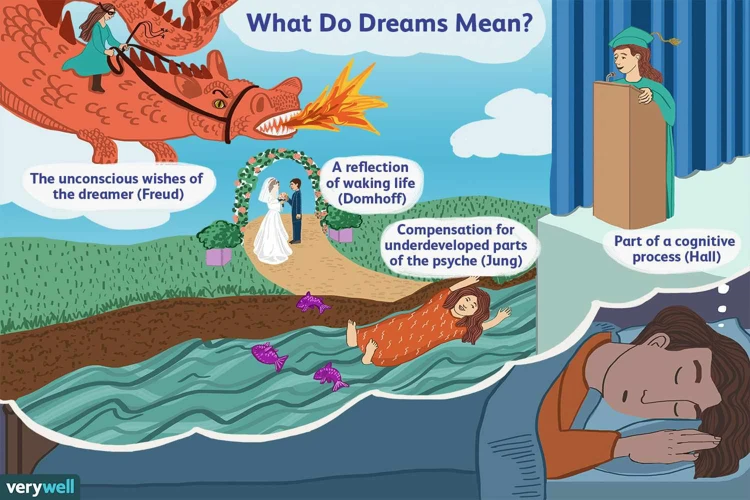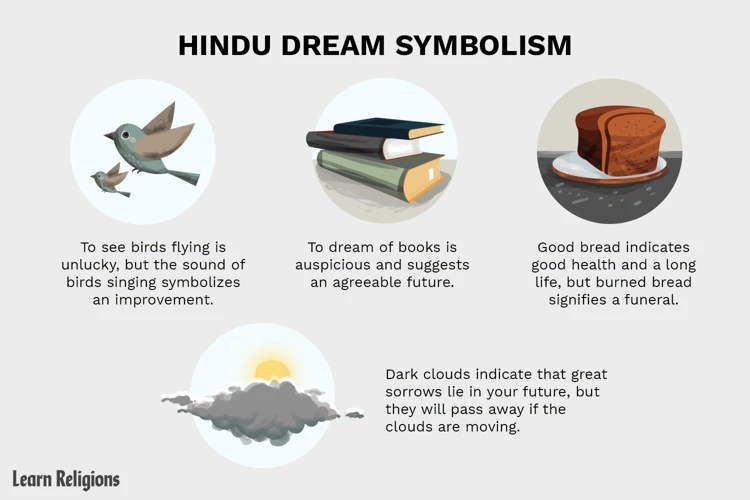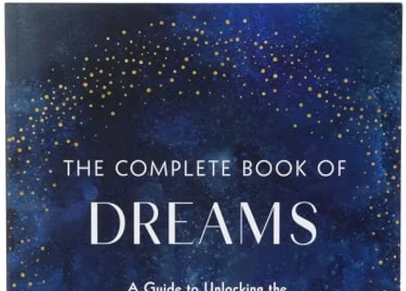Have you ever woken up from a dream, only to find yourself still dreaming? It’s a perplexing experience that leaves us questioning the meaning and significance of our dreams within dreams. In this ultimate guide, we will delve into the enigmatic realm of dreaming in a dream. We will explore the definition and explanation of this phenomenon, common experiences associated with it, and possible interpretations. Additionally, we will uncover the meanings behind various dream symbols and provide techniques for analyzing dreams within dreams, such as journaling, mindfulness, meditation, and even lucid dreaming. Join us on this journey of unraveling the mysteries that lie within the layers of our subconscious mind.
What are Dreams?

Why are dreams such an intriguing aspect of human existence? They are a complex phenomenon that continues to baffle scientists and psychologists alike. Dreams can be defined as a series of thoughts, images, and sensations that occur during sleep. They are often vivid and feel like a separate reality, blurring the lines between the conscious and subconscious mind. While researchers have various theories about the purpose and function of dreams, there is no definitive answer. Some theories suggest that dreams serve as a way for the brain to process emotions and experiences, while others believe they may hold symbolic meanings or provide insight into our deepest desires and fears. Regardless of the exact nature of dreams, they are undeniably fascinating and play a significant role in our lives.
Why Do We Dream?

The question of why we dream has intrigued philosophers, scientists, and psychologists for centuries. While there is no definitive answer, several theories attempt to explain this enigmatic phenomenon. One theory is that dreams serve as a way for the brain to process and consolidate memories and information gathered throughout the day. Another theory suggests that dreams are the result of random firing of neurons in the brain, creating a collage of images and experiences. Dreams may also provide an outlet for unexpressed emotions or wishes, allowing us to explore scenarios and desires that may not be possible in waking life. Regardless of the exact purpose, dreams continue to fascinate and captivate us, offering a glimpse into the complex workings of the human mind.
Dreaming in a Dream

Dreaming in a dream, also known as a “nested dream” or a “false awakening,” is a peculiar experience that leaves us questioning the boundaries between reality and the dream world. Dreaming in a dream occurs when we believe we have woken up from a dream, only to discover that we are still dreaming. It can be a disorienting and confusing phenomenon, often causing a sense of perplexity and uncertainty. During such dreams, individuals may go about their daily activities as if they were awake, only to realize later that they are still in a dream state. This recursive nature of dreams adds an extra layer of complexity to the already mysterious realm of dreaming. The experience of dreaming in a dream can vary from person to person, but it is not uncommon to feel a sense of unease or even excitement upon awakening from such dreams, wondering if the reality we perceive is just another layer of the dream world. To explore more dream meanings, you can check out the meaning of flying dreams.
Definition and Explanation
When it comes to understanding dreaming in a dream, it is essential to explore its definition and explanation. This phenomenon, also known as a nested dream or a dream within a dream, occurs when we dream that we are dreaming. It creates multiple layers of consciousness and can be disorienting when we wake up from one dream, only to find ourselves still immersed in another. It is important to note that dreaming in a dream is different from experiencing a dream sequence or having a dream transition within a single dream. While it can be a perplexing experience, it offers a unique opportunity to delve deeper into the realms of our subconscious mind. Some theories suggest that dreaming in a dream may symbolize a heightened level of self-awareness or an exploration of different aspects of our psyche. To gain a better understanding of the possible meanings behind this phenomenon, we can analyze common experiences associated with dreaming in a dream and explore the interpretations that experts offer.
Common Experiences
When it comes to common experiences in dreaming within a dream, many people report similar occurrences. One common experience is the sensation of waking up from a dream, only to realize that they are still dreaming. This creates a sense of confusion and can be accompanied by a feeling of being trapped within multiple layers of dreams. Another common experience is the inability to control or alter the events of the dream, even when one is aware that they are dreaming. This lack of control can lead to feelings of helplessness or frustration. Additionally, some individuals may experience recurring themes or symbols that appear in their dreams within dreams, such as being chased or falling. These common experiences serve as a reminder of the intricate and mysterious nature of the dream world. To explore more about specific dream symbols and their meanings, you can read our article on the meaning of seeing someone bald in a dream.
Possible Interpretations
When it comes to interpreting dreams within dreams, there is no one-size-fits-all approach. The possible interpretations can vary greatly depending on the individual and their unique experiences and emotions. For some, dreaming within a dream may symbolize a heightened level of self-awareness or a deeper exploration of their subconscious mind. It could indicate a need for introspection and self-reflection. Others may interpret it as a manifestation of unresolved conflicts or unresolved emotions. Dreams within dreams can also be seen as a way for the mind to process and make sense of complex or confusing situations. Ultimately, understanding the meaning behind dreaming within a dream requires a careful analysis of the specific symbols, emotions, and experiences present in the dream, as well as an individual’s personal associations and beliefs.
Dream Symbols and Their Meanings

Dreams are often filled with symbolic imagery that can leave us wondering about their significance. Understanding the meanings behind dream symbols can provide valuable insights into our subconscious thoughts and emotions. Here are some common dream symbols and their possible interpretations:
- 1. Flying: This symbol often represents a sense of freedom, liberation, or the ability to rise above challenges. It may also suggest a desire for independence or a need to escape from a situation.
- 2. Water: Water in dreams can symbolize emotions, the unconscious mind, or the flow of life. The state of the water, whether calm, turbulent, or stagnant, may provide clues about your emotional state.
- 3. Teeth: Dreaming about teeth can be associated with concerns about appearance, communication, or personal power. It may indicate feelings of vulnerability, insecurity, or the need to express yourself more assertively.
- 4. Falling: Falling in dreams often represents a loss of control or fear of failure. It may also reflect feelings of insecurity, instability, or a lack of support in your waking life.
- 5. Animals: Different animals in dreams can carry various meanings. For example, a snake could symbolize transformation or hidden fears, while a cat may represent independence or intuition. The specific context and personal associations with the animal are essential for interpretation.
As with any dream symbol, it’s important to consider your own unique experiences, emotions, and associations when analyzing their meanings. Keep a dream journal and reflect on the symbolism that resonates with you personally.
Symbol 1
Symbol 1 in dreams carries its own unique meaning and significance. Interpretations can vary depending on personal experiences and cultural backgrounds. One common symbol is flying, which often represents freedom, liberation, and the ability to rise above challenges. It can signify a sense of control and power over one’s life. However, it is important to note that the meaning of a symbol can differ from person to person. For some, flying may evoke fear or a lack of control. It is essential to consider the context and emotions surrounding the symbol to fully grasp its intended message. Exploring the symbolism of dreams can provide valuable insights into our unconscious thoughts and desires.
Symbol 2
Symbol 2 in dreams is a mysterious element that holds unique meanings for each individual. The interpretation of this symbol can vary depending on personal experiences, cultural backgrounds, and subconscious associations. could represent a range of concepts such as love, fear, success, or even a specific person or object. It is crucial to consider the context and emotions surrounding Symbol 2 in the dream to unravel its true significance. Keeping a dream journal and reflecting on your emotions and experiences during the dream can help uncover hidden messages and insights related to this symbol. Exploring the deep layers of Symbol 2 can lead to a better understanding of oneself and provide guidance for personal growth and self-discovery.
Symbol 3
Symbol 3 in dreaming within a dream can hold a significant meaning. One widely recognized dream symbol is water. Water in a dream can represent emotions, tranquility, and the subconscious mind. Depending on the context of the dream, it can have different interpretations. For example, calm and clear water may indicate a sense of peace and emotional balance, while turbulent or murky water could suggest turmoil or unresolved emotions. It is essential to consider the specific details and emotions associated with the water symbol to gain a deeper understanding of its meaning within the dream. Exploring the symbolism of water in dreams can provide insights into our emotional states and inner experiences.
Symbol 4
Symbol 4 in dreams is a fascinating element that can carry significant meaning. This symbol could represent a variety of things depending on the context and personal associations. For some, may represent a sense of freedom and liberation. It could be linked to the desire to break free from constraints or explore new possibilities. Alternatively, it could symbolize a need for control and order in one’s life. This symbol may also signify a sense of balance and harmony, suggesting the importance of finding equilibrium in different aspects of life. It is important to consider the specific details and emotions associated with Symbol 4 in order to derive a more accurate interpretation. Remember, dreams are deeply personal, and the meanings attached to symbols can vary from person to person.
Symbol 5
Symbol 5, in the realm of dream interpretation, holds its own unique significance. While the meaning of symbols in dreams can be highly personal and subjective, often represents a sense of transformation or change. It may indicate a period of growth and evolution in one’s life, where old beliefs or behaviors are shed, and new opportunities arise. This symbol could manifest in various forms, such as a butterfly emerging from a cocoon, a phoenix rising from the ashes, or even a simple change of scenery within the dream itself. Symbol 5 serves as a reminder that change is a natural and inevitable part of life, and that embracing it can lead to personal breakthroughs and self-discovery.
…and more
When it comes to dream symbols and their meanings, the possibilities are endless. Each symbol can hold a unique significance depending on the context, personal experiences, and cultural beliefs. Here are a few examples of common dream symbols and their possible interpretations:
1. Flying: This symbol often represents a sense of freedom, liberation, or the desire to escape from a situation or obstacle in waking life. (For more on flying dreams, check out this article.)
2. Dreaming of a loved one: Seeing someone you care about in a dream can evoke strong emotions and may indicate a longing for their presence or a desire for a deeper connection.
3. Being bald: This may symbolize vulnerability, insecurity, or a fear of losing power or control. (Learn more about the meaning of bald dreams here.)
4. Water: Water is a versatile symbol that can represent emotions, intuition, cleansing, or renewal, depending on its form and context.
5. Being chased: This common dream symbol can reflect feelings of anxiety, fear, or the need to confront and overcome obstacles in one’s life.
Remember, dream interpretation is highly subjective, and these are just a few examples. The most important aspect is to pay attention to your own personal associations and emotions connected to these symbols. Explore the depths of your dreams and uncover the hidden meanings they may hold.
Techniques for Analyzing Dreams within Dreams
Analyzing dreams within dreams requires a unique approach to understanding their meanings and messages. Here are several techniques that can help in this process:
1. Journaling: Keeping a dream journal is an effective way to record and analyze dreams within dreams. Write down as many details as possible upon waking, including emotions, symbols, and any significant events. This can help uncover patterns and themes over time.
2. Mindfulness and Meditation: Practicing mindfulness and meditation can enhance self-awareness and receptivity to the messages within dreams. By incorporating these practices into your daily routine, you can develop a deeper connection with your dreams and better comprehend their significance.
3. Lucid Dreaming: Lucid dreaming is the ability to become aware that you are dreaming while in the dream itself. This can be a powerful tool for analyzing dreams within dreams as it allows for conscious exploration and interaction with the dream environment. Techniques for achieving lucidity include reality checks and dream journaling.
4. Professional Guidance: If you find it challenging to interpret dreams within dreams on your own, seeking the guidance of a professional, such as a therapist or dream analyst, can provide valuable insights. They can offer expertise in dream interpretation and help you navigate the complexities of your dreams within dreams.
By utilizing these techniques, you can gain a deeper understanding of the layers of meaning hidden within your dreams, unraveling the messages that your subconscious mind is trying to communicate.
Journaling
Journaling is a powerful technique for analyzing dreams within dreams. By keeping a dream journal, you can document your dreams immediately upon waking up. This practice helps in capturing the details and emotions experienced in the dream. When journaling about dreams, it is important to include specific details such as people, objects, and locations. Additionally, noting your emotional state and any recurring themes or symbols can provide valuable insights. By regularly recording your dreams, you can start noticing patterns and recurring symbols that may hold significance in your subconscious mind. Journaling also allows you to track dream themes over time and identify any connections or changes in the dreamscape. This reflective practice helps in understanding the deeper meanings of your dreams and can serve as a foundation for further analysis.
Mindfulness and Meditation
Mindfulness and meditation can be valuable techniques for analyzing dreams within dreams. Mindfulness involves being fully present and aware of your thoughts, feelings, and sensations in the present moment. By practicing mindfulness, you can develop a greater understanding of your dreams and the various layers within them. When it comes to meditation, it can help cultivate a calm and focused mind, allowing you to explore your dreams with clarity and intention. Through meditation, you can enhance your ability to recall dreams and gain insights into their meanings. Both mindfulness and meditation offer a means of connecting with your inner self and exploring the depths of your subconscious mind. They provide a foundation for introspection and self-reflection, which are essential for deciphering the intricate symbolism and messages present in your dreams within dreams.
Lucid Dreaming
Lucid dreaming is an extraordinary phenomenon that occurs when a person becomes aware that they are dreaming while in the midst of the dream itself. It is a state of heightened consciousness within the dream realm, where the dreamer has the ability to actively participate and manipulate the dream environment. This experience can be incredibly empowering and exhilarating, as it allows individuals to explore and control their dream narratives. Techniques such as reality checks, keeping dream journals, and practicing meditation can help enhance the likelihood of lucid dreaming. Once in a lucid dream, dreamers can engage in activities such as flying, traveling to fantastical landscapes, or engaging in conversations with dream characters. Lucid dreaming opens up a world of endless possibilities and can be a tool for personal growth, self-exploration, and even problem-solving. However, achieving and maintaining lucidity in dreams can be challenging and requires practice and patience.
Professional Guidance
When it comes to analyzing dreams within dreams, seeking professional guidance can provide valuable insights and perspectives. There are trained professionals such as psychologists, therapists, and dream analysts who specialize in dream interpretation. They can help navigate the complex symbolism and meanings behind dreams, guiding individuals towards a deeper understanding of their subconscious mind. Through therapy sessions or consultations, these professionals can assist in uncovering unconscious patterns, unresolved emotions, or hidden desires that may be manifesting in dreams. Their expertise and experience can offer a new level of interpretation and help individuals gain a clearer understanding of themselves and their dreams. Professional guidance can be particularly beneficial for individuals who experience recurring or vivid dreams and wish to delve deeper into their meanings and implications. Whether it’s through one-on-one sessions or group workshops, seeking the assistance of a dream professional can be a valuable tool in the journey of deciphering the mysteries of dreaming in a dream.
Conclusion
In conclusion, dreaming within a dream is a captivating phenomenon that invites us to explore the depths of our subconscious mind. While the meaning and interpretation of dreams within dreams can be subjective and vary from person to person, there are techniques that can help unlock their hidden messages. Whether through journaling, practicing mindfulness and meditation, or even delving into the world of lucid dreaming, we can gain valuable insights into our inner thoughts, emotions, and desires. It is important to remember that dreams are unique to each individual, and there is no one-size-fits-all approach to understanding their meaning. Embrace the enigmatic nature of dreams within dreams and continue to explore the untapped potential of your own subconscious mind. As you navigate the mysterious realm of dreams, may you find revelation, self-discovery, and perhaps even a touch of magic along the way.
Frequently Asked Questions
What happens when we dream?
When we dream, our brain activates different areas related to memory, emotions, and sensory experiences. This leads to the creation of vivid and often surreal scenarios that we experience as dreams.
Why do we forget most of our dreams?
Forgetting dreams is a common phenomenon. It occurs because the brain prioritizes processing new information over storing dreams in long-term memory. However, keeping a dream journal can help improve dream recall.
Do dreams have meanings?
Dreams can have a variety of meanings. They may reflect our subconscious thoughts, emotions, fears, or desires. However, dream interpretation is subjective and can vary between individuals.
Can nightmares have a positive interpretation?
Yes, nightmares can have positive interpretations. Often, they symbolize unresolved fears or issues that need to be addressed. By facing these fears, one can experience personal growth and transformation.
Can we control our dreams?
Yes, it is possible to control dreams through a technique called lucid dreaming. Lucid dreaming allows individuals to be aware that they are dreaming and exert some control over the dream’s narrative.
Why do recurring dreams happen?
Recurring dreams often indicate unresolved issues or emotions that need attention. They serve as reminders and opportunities for self-reflection and problem-solving.
Is there a scientific explanation for precognitive dreams?
While reports of precognitive dreams exist, science has not provided a conclusive explanation for them. Some theories suggest that they may be a result of coincidences or the brain’s ability to make unconscious predictions.
What do common dream symbols mean?
Common dream symbols can have various interpretations, influenced by personal experiences and cultural backgrounds. For example, dreaming of flying can symbolize liberation and freedom, while dreaming of falling may signify a loss of control or insecurity.
Can dreams provide insights about our waking life?
Dreams can offer insights into our subconscious mind and provide a deeper understanding of our emotions, desires, and concerns. Analyzing dreams can help us gain self-awareness and make connections to our waking life.
When should I seek professional help for recurring or distressing dreams?
If recurring or distressing dreams significantly impact your daily life, emotional well-being, or sleep quality, it may be helpful to consult a mental health professional. They can provide guidance and support in understanding and resolving the underlying issues.







